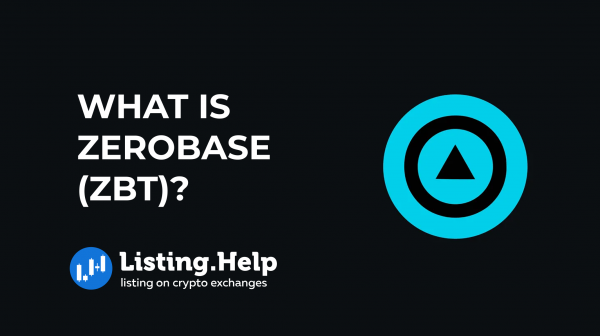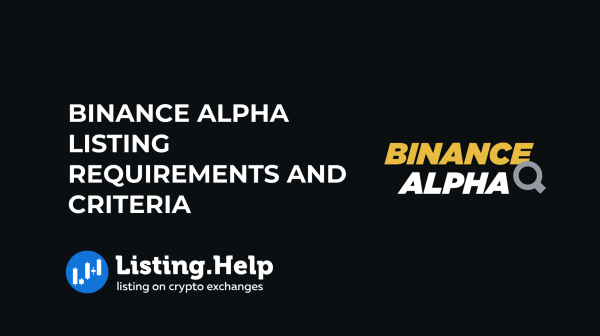What Is a Crypto Whitepaper?
 March 8, 2024
March 8, 2024 Updated: January 27 2025, 07:18
Updated: January 27 2025, 07:18
LEAVE A REQUEST
Launching your own token project? Our experts are ready to help with listing on exchanges, market making, marketing and other solutions
SUBMIT APPLICATIONA whitepaper acts as a detailed guide offering insights into a particular subject, enabling readers to grasp complex information. For instance, a software development team might issue a whitepaper to detail the software’s features and goals.
Whitepaper is an indispensable document that spells out the foundational elements and technical specifics of a blockchain or cryptocurrency initiative. While typically centered on a coin or token, these papers can address a spectrum of projects, from DeFi platforms to gaming applications.
Such documents usually contain in-depth data, visual aids, and information on the project’s structure, the team at the helm, and their planned milestones.
Each whitepaper is custom-crafted to suit the project it represents, striving to be unbiased and thorough to effectively convey the project’s intentions. It’s important for readers to critically assess whitepapers, particularly those with convincing language or unclear assertions.
In cryptocurrency, whitepapers function similarly to business plans, giving potential investors a comprehensive overview of a project before it launches. They serve as an introductory platform, outlining the project’s intentions and planned trajectory.
What does a cryptocurrency whitepaper include?
Founders use whitepapers to clarify their project’s objectives. For instance, Bitcoin’s whitepaper presents a method for direct online transactions without financial institutions, while Ethereum’s focuses on a framework for building decentralized apps.
Whitepapers generally showcase how a crypto project can tackle existing issues or improve particular life facets.
Yet, it’s wise to approach with caution. The ease of whitepaper creation became evident during the 2017 ICO boom, where numerous projects underdelivered despite their “revolutionary” proposals. A cryptocurrency’s link to a potential application doesn’t guarantee its success.
Whitepapers also unpack the cryptocurrency’s operational structure, like its consensus mechanism, which allows for distributed network participant coordination.
They often explore tokenomics — detailing token distribution, burning mechanisms, and rewards — and may include a roadmap, providing a timeline for project milestones and releases.
While aiming for simplicity to ensure broader comprehension, a well-constructed whitepaper will also offer in-depth technical insights, affirming the project’s feasibility and expertise.
How to read a whitepaper?
When reviewing a cryptocurrency white paper, assess whether the project genuinely requires blockchain technology. While blockchains provide secure transaction logs and foster trust without intermediaries, they’re not suitable for every solution. Determine if blockchain’s inclusion genuinely adds value or merely complicates the project.
Carefully analyze white papers to gauge the proposed benefits and potential drawbacks, helping you gauge your interest in the project. These documents typically come before the product is launched, so there’s often uncertainty about the project’s viability. Concentrate on the essential aspects you need to assess. Critically evaluate whether the project will effectively streamline the processes it aims to address, enabling you to make informed decisions about the project’s merits.
Why are whitepapers important?
Whitepapers are crucial in evaluating and understanding cryptocurrency ventures. Although there’s no universal blueprint for crafting them, they’ve become essential for in-depth analysis of crypto initiatives.
Reviewing a project’s whitepaper is commonly recommended as the first step in crypto research. These documents help identify warning signs or highlight noteworthy initiatives. They also provide a way to check if a project is adhering to its proposed plans and objectives.
Whitepapers enhance transparency, offering all interested parties a clear view of a project’s fundamentals. They assist investors in making informed decisions, enable developers to gauge their interest in contributing to the project, and help potential community members determine their alignment with the project’s vision and goals.
How to write a whitepaper?
While brochures and engaging materials are standard for product promotion, white papers serve to provide detailed, evidence-based discussions on how a product solves a particular issue. These documents should incorporate compelling statistics and data, often accompanied by visuals like charts or lists, to persuade the audience. For new enterprises, substantiating assertions with data from reliable sources is essential.
The detail and formality of a white paper may vary, aiming to offer a comprehensive examination of the topic. Solid research and a clear, logical progression are crucial to keep the audience interested throughout the paper.
It should begin with a specific, well-researched issue or subject, delivering profound insights relevant to the project and describing the product’s features. Drafting an outline first can aid in structuring the narrative and ensuring ideas flow seamlessly. The opening should engage readers immediately, perhaps by addressing a widespread issue or suggesting a fresh solution.
The document’s layout should promote ease of reading, with clearly marked sections. Thorough revision is critical to eliminate any errors, and obtaining feedback from others can provide additional clarity, identifying any potentially confusing points.
Two famous white paper examples
Bitcoin Whitepaper
Crafted by Satoshi Nakamoto in 2008, the “Bitcoin: A Peer-to-Peer Electronic Cash System” whitepaper introduces Bitcoin as a novel payment mechanism independent of standard banking systems. It scrutinizes the network’s structure, illustrating how individuals can engage in transactions without intermediaries. The paper also covers Bitcoin’s protective measures against issues such as censorship and double-spending.
Ethereum Whitepaper
Vitalik Buterin disclosed the Ethereum concept in 2014, following a preliminary discussion in a blog post from 2013. This document contrasts with Bitcoin’s primary purpose, proposing a versatile blockchain platform capable of executing a vast range of computations.
Ethereum’s ambitions extend beyond a digital currency, aiming to provide a substrate for diverse decentralized applications, from fresh cryptocurrencies to automated financial operations. The document details the foundational technologies like smart contracts and the Ethereum Virtual Machine, which underpin Ethereum’s diverse capabilities.
Conclusion
Ideally, a whitepaper should offer a clear understanding of a cryptocurrency project’s objectives and methodologies. However, given that whitepapers are unregulated and can be authored by anyone, thorough scrutiny is crucial if you’re considering investing in a project. It’s vital to carefully evaluate the whitepaper, identifying any potential warning signs or risks associated with the project.

For more insights into blockchain technologies and their evolving landscapes, visit our blog at Listing Help. Stay informed about the latest developments and breakthroughs in the blockchain world.







 December 8, 2025
December 8, 2025 








